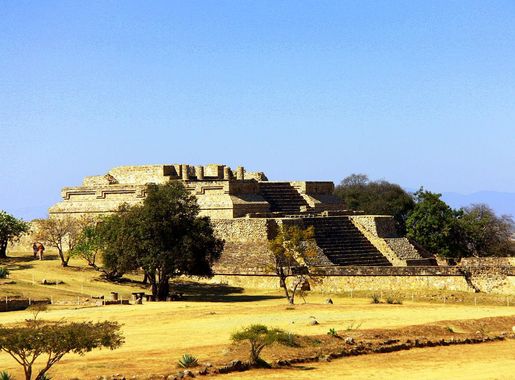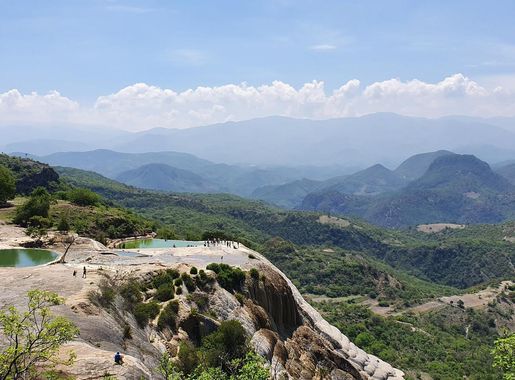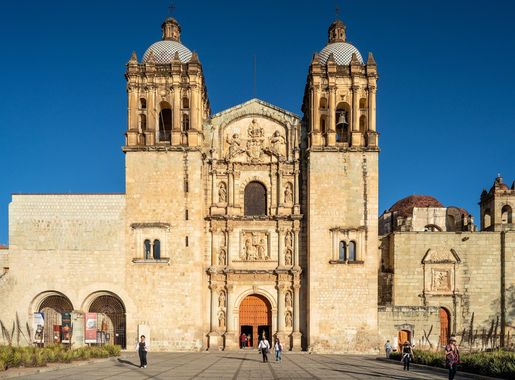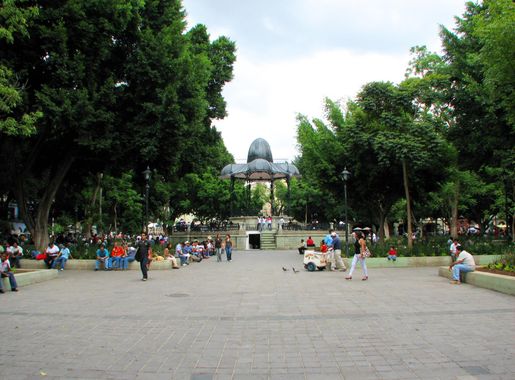
Ruta Independencia: The Heartbeat of Oaxaca's Cultural Heritage
Explore Ruta Independencia in Oaxaca: A vibrant neighborhood filled with history, culinary delights, and a lively cultural scene. Discover the heart of Oaxaca's rich heritage.
Ruta Independencia in Oaxaca, Mexico, is a vibrant and historic neighborhood that serves as a living museum of the city's rich cultural heritage. This area is named after the Mexican War of Independence and is steeped in history, offering visitors a unique glimpse into the past while enjoying modern amenities. Strolling through Ruta Independencia, you'll encounter beautifully preserved colonial architecture, charming cobblestone streets, and colorful murals that tell the story of Oaxaca's indigenous and colonial history. The neighborhood is home to several key landmarks, including the majestic Santo Domingo Church, which is renowned for its baroque architecture and intricate gold leaf interior. Ruta Independencia is also a culinary hotspot, with an array of traditional Oaxacan eateries and upscale restaurants. Don't miss the chance to sample local delicacies such as mole, tlayudas, and mezcal. The area is also famous for its bustling markets, where you can find handmade crafts, textiles, and souvenirs that reflect the region's artisanal traditions. In addition to its historical and culinary attractions, Ruta Independencia offers a lively cultural scene with frequent festivals, street performances, and art exhibitions. Whether you're a history buff, a foodie, or an art lover, Ruta Independencia has something to captivate your interests and leave you with unforgettable memories.
Local tips in Ruta Independencia
- Visit Santo Domingo Church early in the morning to avoid crowds and enjoy the serene atmosphere.
- Try the local street food for an authentic taste of Oaxaca. Tlayudas and mole are must-try dishes.
- Wear comfortable walking shoes as the cobblestone streets can be uneven.
- Check the local calendar for festivals and events to experience the neighborhood's vibrant cultural scene.
- Bring cash for market purchases, as many vendors do not accept credit cards.
Ruta Independencia: The Heartbeat of Oaxaca's Cultural Heritage
Ruta Independencia in Oaxaca, Mexico, is a vibrant and historic neighborhood that serves as a living museum of the city's rich cultural heritage. This area is named after the Mexican War of Independence and is steeped in history, offering visitors a unique glimpse into the past while enjoying modern amenities. Strolling through Ruta Independencia, you'll encounter beautifully preserved colonial architecture, charming cobblestone streets, and colorful murals that tell the story of Oaxaca's indigenous and colonial history. The neighborhood is home to several key landmarks, including the majestic Santo Domingo Church, which is renowned for its baroque architecture and intricate gold leaf interior. Ruta Independencia is also a culinary hotspot, with an array of traditional Oaxacan eateries and upscale restaurants. Don't miss the chance to sample local delicacies such as mole, tlayudas, and mezcal. The area is also famous for its bustling markets, where you can find handmade crafts, textiles, and souvenirs that reflect the region's artisanal traditions. In addition to its historical and culinary attractions, Ruta Independencia offers a lively cultural scene with frequent festivals, street performances, and art exhibitions. Whether you're a history buff, a foodie, or an art lover, Ruta Independencia has something to captivate your interests and leave you with unforgettable memories.
Iconic landmarks you can’t miss
Zócalo (Plaza de la Constitución)
Discover the pulse of Oaxaca at the Zócalo, a vibrant plaza filled with history, culture, and delicious local cuisine.
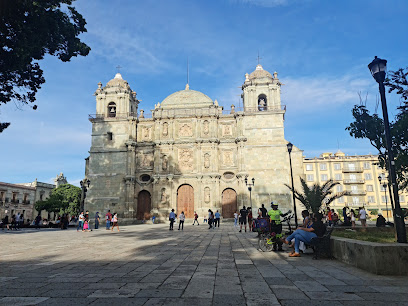
Zona Arqueológica de Monte Albán
Discover the breathtaking archaeological site of Monte Albán, a UNESCO World Heritage site showcasing the rich heritage of the Zapotec civilization in Oaxaca, Mexico.
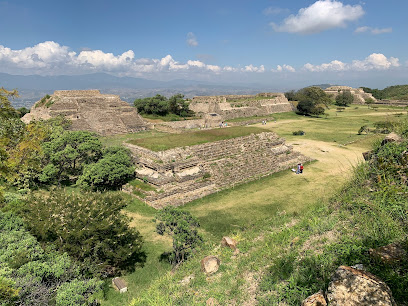
Templo de Santo Domingo de Guzmán
Explore the enchanting Templo de Santo Domingo de Guzmán, an architectural marvel and spiritual haven that embodies Oaxaca's rich cultural heritage.
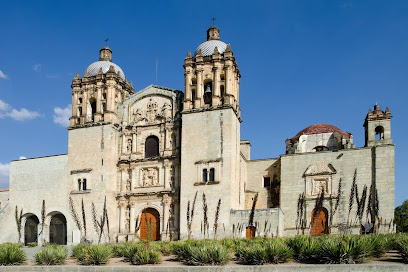
Plaza de la Danza
Discover the vibrant Plaza de la Danza in Oaxaca - a lush city park and open-air museum filled with rich history and cultural events.
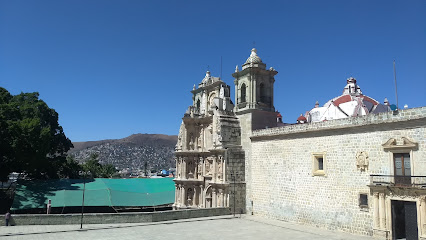
Jardín Etnobotánico de Oaxaca
Explore the stunning Jardín Etnobotánico de Oaxaca, where nature and culture intertwine in a vibrant botanical paradise.
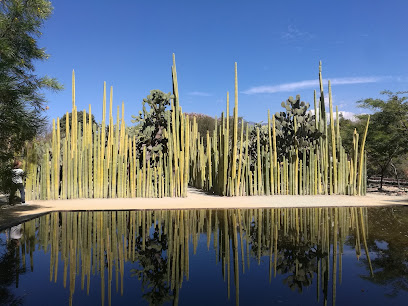
Fuente de las 8 Regiones
Explore the stunning Fuente de las 8 Regiones, a breathtaking fountain in Oaxaca celebrating the region's rich cultural heritage and artistic beauty.
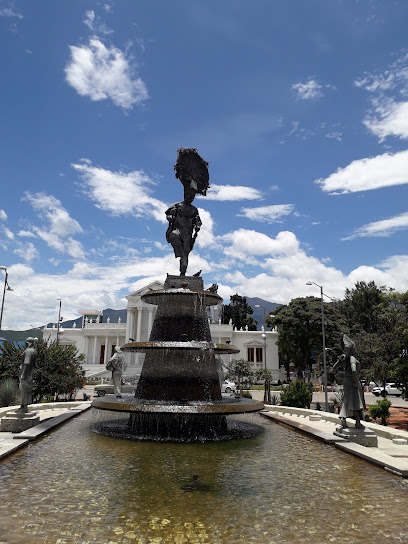
Metropolitan Cathedral of Oaxaca
Discover the breathtaking beauty and rich history of the Metropolitan Cathedral of Oaxaca, a symbol of faith and artistry in the heart of the city.
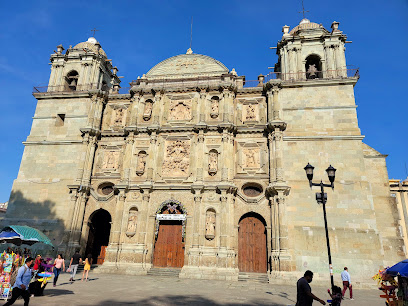
Museum of Cultures of Oaxaca, Santo Domingo
Discover the rich heritage and vibrant history of Oaxaca at the Museum of Cultures, a captivating destination for cultural enthusiasts and travelers alike.

Museo De La Filatelia MUFI
Explore the captivating Museo De La Filatelia MUFI, where the artistry of stamps reveals rich cultural stories in the heart of Oaxaca.
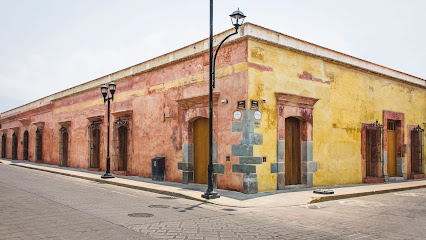
MUSEO DE ARTE CONTEMPORANEO DE OAXACA
Explore the dynamic world of contemporary art at Museo de Arte Contemporáneo de Oaxaca, where creativity and culture converge in a stunning setting.
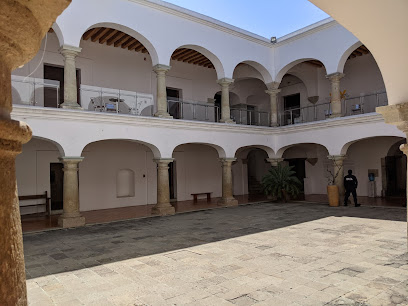
Museum of Oaxacan Painters
Explore the vibrant world of Oaxacan art at the Museum of Oaxacan Painters, where tradition meets creativity in a stunning cultural experience.
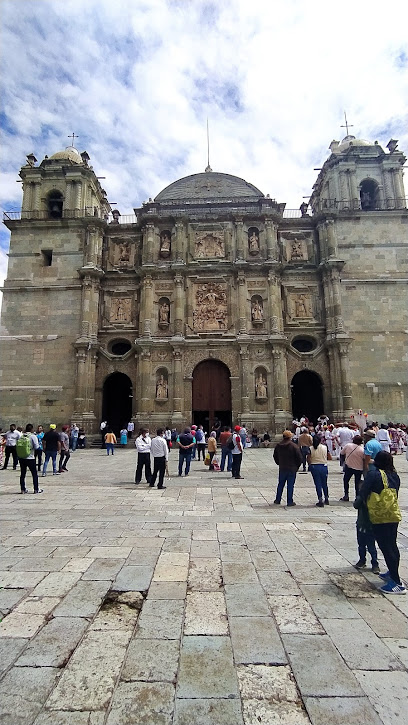
MUSEO BELBER
Explore the rich cultural tapestry of Oaxaca at Museo Belber, where history and artistry come alive in captivating exhibits and displays.

Espacio Zapata
Explore Espacio Zapata, a vibrant museum in Oaxaca showcasing local artistry and cultural heritage through dynamic exhibitions and engaging workshops.
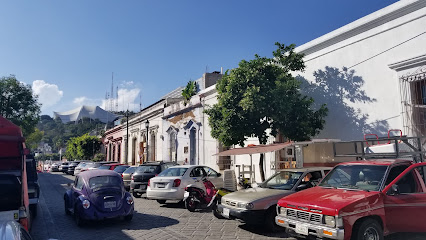
Ofrenda
Experience the heart of Oaxaca at Ofrenda, a charming lodging that blends comfort with local culture in a vibrant setting.
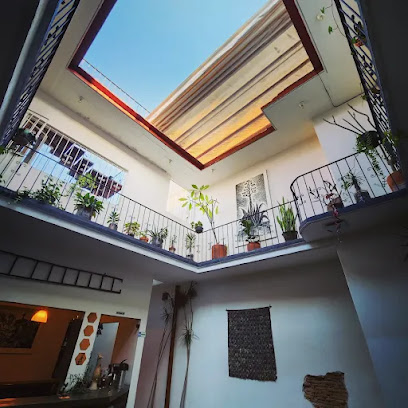
Oaxaca
Explore Oaxaca, a UNESCO World Heritage site, where rich culture meets stunning landscapes and mouthwatering cuisine.
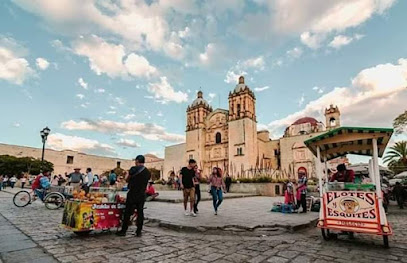
Unmissable attractions to see
Zona Arqueológica de Monte Albán
Discover the ancient wonders of Monte Albán, a UNESCO World Heritage site showcasing the grandeur of the Zapotec civilization in Oaxaca, Mexico.
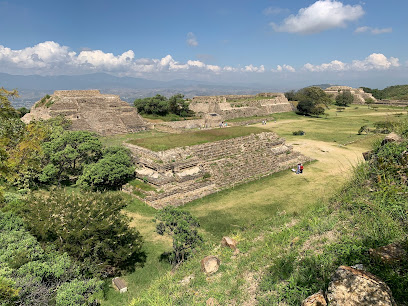
Basílica de Nuestra Señora de la Soledad
Discover the stunning Basilica de Nuestra Señora de la Soledad, a baroque masterpiece and a spiritual haven in the heart of Oaxaca, Mexico.
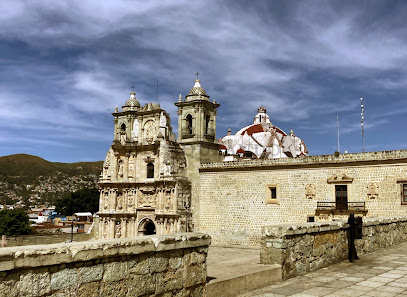
El Tequio Park
Discover the breathtaking landscapes and diverse wildlife of El Tequio Park, a serene escape in Santa Cruz Xoxocotlán, Oaxaca.

Centro Cultural San Pablo
Explore the vibrant cultural scene of Oaxaca at Centro Cultural San Pablo, a historic center for art and community engagement.
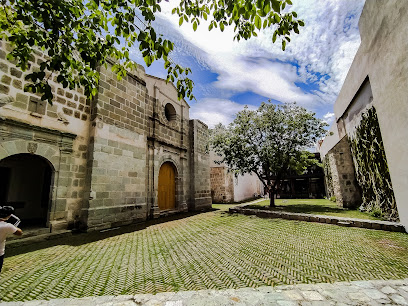
MUSEO DE ARTE CONTEMPORANEO DE OAXACA
Explore the vibrant world of contemporary art at Museo de Arte Contemporáneo de Oaxaca, a cultural gem in the heart of Oaxaca.
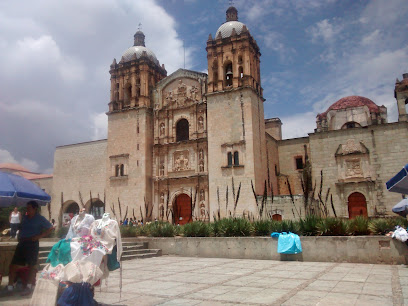
Museo de Arte Prehispánico de México Rufino Tamayo
Explore Mexico's rich pre-Hispanic art and culture at the Museo de Arte Prehispánico de México Rufino Tamayo in the historic city of Oaxaca.
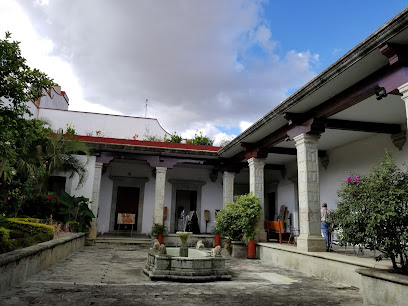
Museo Infantil de Oaxaca
Discover the enchanting Museo Infantil de Oaxaca, where creativity and learning come to life through interactive exhibits for children and families.
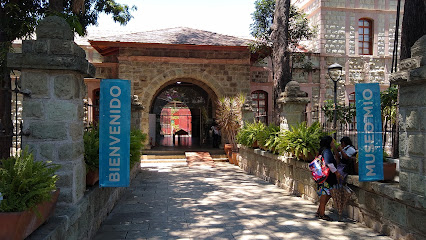
Ex Convento de San Pablo
Explore the Ex Convento de San Pablo in Oaxaca, a stunning museum that blends rich history and breathtaking architecture, perfect for cultural enthusiasts.

Espacio Zapata
Explore the vibrant art and cultural heritage at Espacio Zapata, a must-visit museum in the heart of Oaxaca for travelers seeking local experiences.
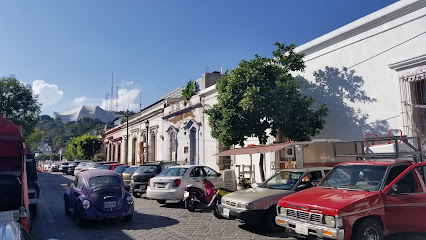
Essential places to dine
Casa Oaxaca el Restaurante
Experience authentic Oaxacan flavors at Casa Oaxaca el Restaurante - where tradition meets innovation in every dish.
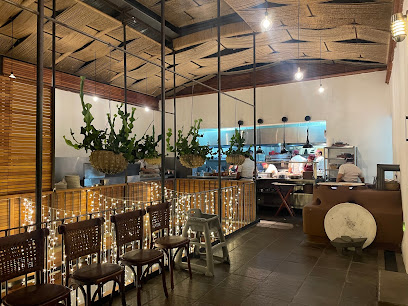
Las Quince Letras Restaurante
Experience the rich flavors of Oaxacan cuisine at Las Quince Letras Restaurante – a culinary treasure in Oaxaca.
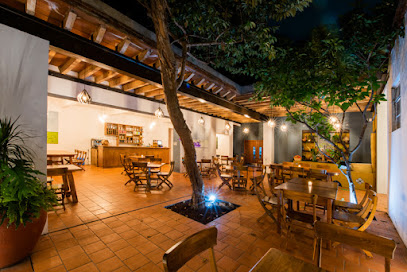
Los Danzantes
Discover Oaxacan culinary artistry at Los Danzantes, where tradition meets innovation in every dish.
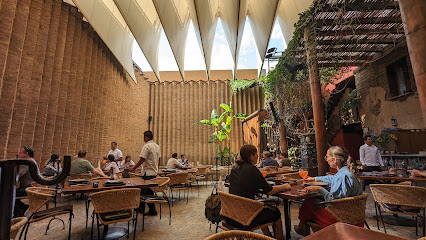
Catedral Restaurant
Discover authentic Mexican cuisine at Catedral Restaurant in Oaxaca, where traditional flavors meet modern dining experiences.
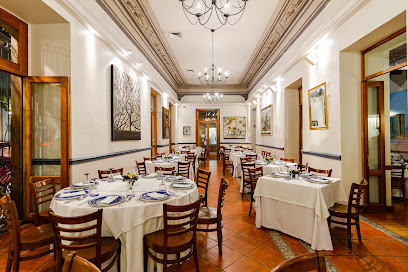
Restaurant Tierra del Sol
Discover the vibrant flavors of Oaxaca at Restaurant Tierra del Sol, where traditional recipes meet contemporary culinary art.
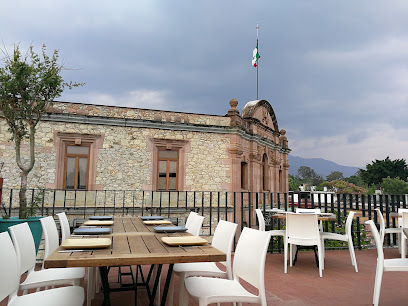
Gozobi Restaurante Bar
Experience authentic Oaxacan flavors at Gozobi Restaurante Bar - where tradition meets modern culinary artistry.
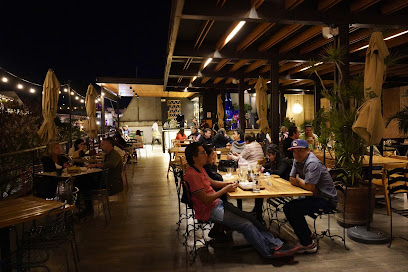
Pitiona
Experience the innovative blend of traditional Oaxacan flavors and modern cuisine at Pitiona, Oaxaca's culinary treasure.

La Azotea
Experience exquisite Oaxacan cuisine at La Azotea, where breathtaking views meet culinary excellence in the heart of Oaxaca.
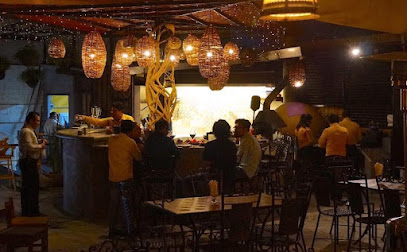
Restaurante Taniperla Oaxaca
Experience authentic Oaxacan flavors at Restaurante Taniperla - a culinary gem in the heart of Oaxaca.
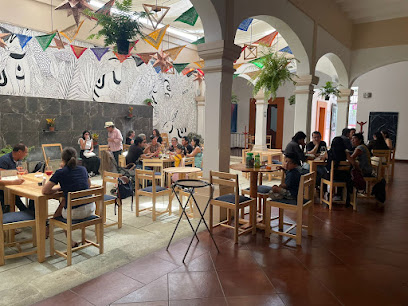
Restaurante El Andariego Cocina Tradicional
Experience the rich flavors of traditional Oaxacan cuisine at Restaurante El Andariego in Oaxaca de Juárez.
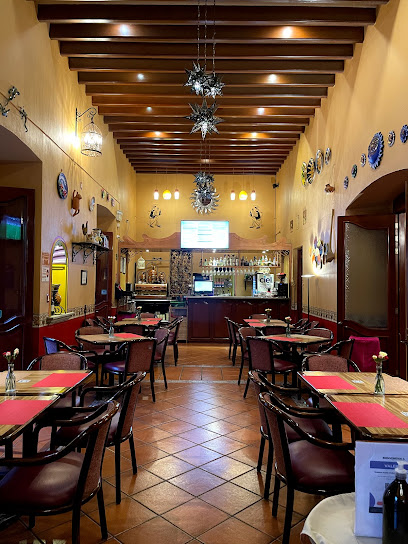
Markets, malls and hidden boutiques
El Cuarzo Store (Smoke shop, Tabaqueria, vape, Skate shop, Graffiti shop, Street wear store)
Discover El Cuarzo Store in Oaxaca: Your go-to destination for streetwear, skate gear, and vaping products, all wrapped in vibrant local culture.
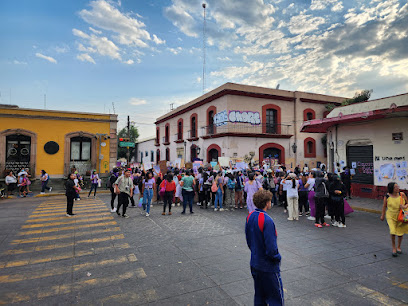
Marchanta
Explore Marchanta in Oaxaca, where unique clothing meets local craftsmanship and culture for an unforgettable shopping experience.
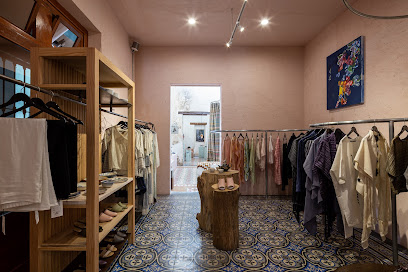
OAXAQUIANDO
Explore Oaxaquiano for authentic Oaxacan souvenirs and handcrafted treasures in the heart of Oaxaca's vibrant cultural scene.
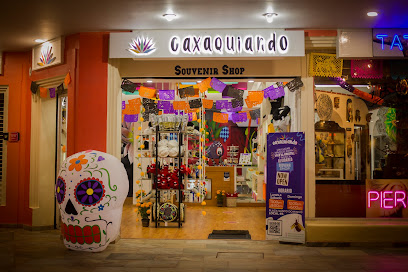
Benshap Galería
Discover the vibrant artistry and handcrafted fashion at Benshap Galería, a gem in the heart of Oaxaca that showcases local talent and culture.
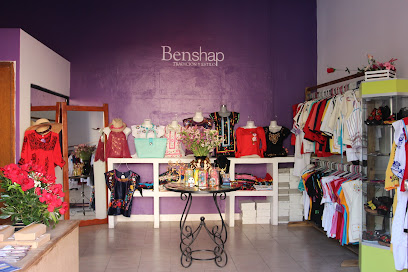
Marias Arte & Diseño
Discover the essence of Oaxaca at Marias Arte & Diseño, where unique art and handicrafts await every traveler seeking authentic souvenirs.

vintage store Sobre Ruedas
Discover unique vintage clothing and accessories at Sobre Ruedas, a charming store in the heart of Oaxaca, Mexico.
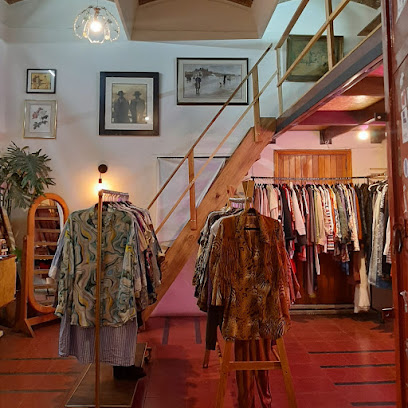
¡Ay Güey! Oaxaca
Explore vibrant and unique fashion at ¡Ay Güey! Oaxaca, where local craftsmanship meets contemporary style in a delightful shopping experience.
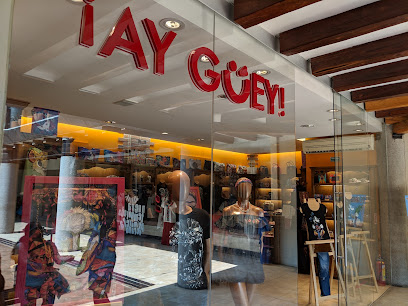
CANDIZÁ DELIMEZCALES BOUTIQUE
Explore Candizá Delimezcales Boutique in Oaxaca for unique handmade treasures that reflect the local culture and artistry.
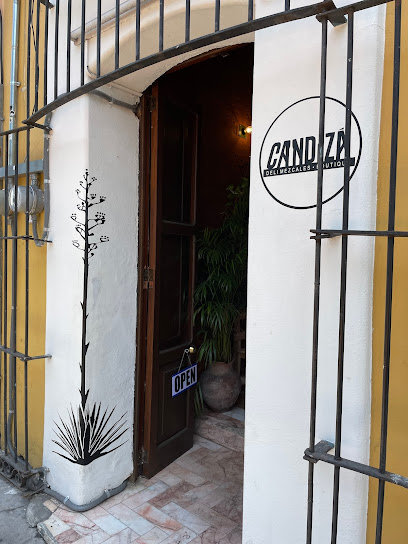
Alma D Oaxaca Artesianas
Discover the vibrant artistry and authentic Oaxacan crafts at Alma D Oaxaca Artesianas, a must-visit gift shop in the heart of Oaxaca.
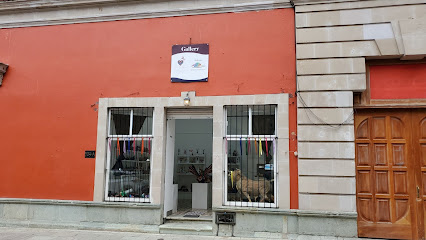
Cool local shops
Explore Oaxaca's vibrant local shops for unique clothing and artisanal treasures reflecting rich cultural heritage.
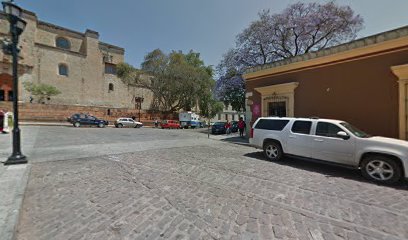
Essential bars & hidden hideouts
La Mezcalerita
Discover the essence of Oaxaca at La Mezcalerita, where mezcal and authentic cuisine unite in a vibrant bar setting.
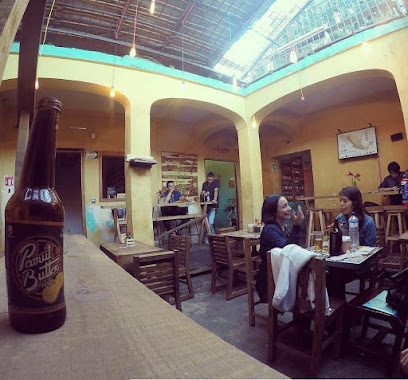
DESESTRESSE OAXACA, Drinks & Cocktails
Discover DESESTRESSE OAXACA, a vibrant cocktail bar offering exquisite drinks, delicious food, and a lively nightlife experience in the heart of Oaxaca.
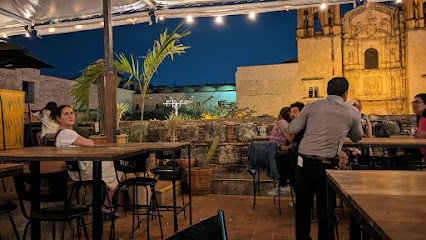
Selva Oaxaca Cocktail Bar
Experience innovative cocktails and vibrant nightlife at Selva Oaxaca Cocktail Bar, a must-visit spot for tourists in the heart of Oaxaca.
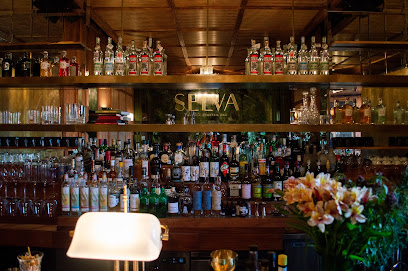
ALAMBIQUE-OAXACA, Gastropub Mexicano
Experience the vibrant culinary scene of Oaxaca at ALAMBIQUE-OAXACA, a gastropub serving exceptional food, drinks, and live music.
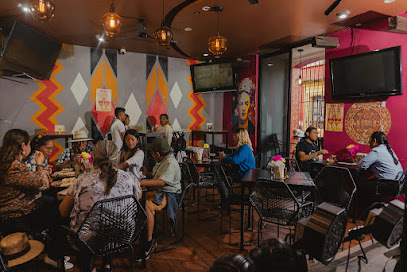
Zapotec Mixology Bar
Discover the flavors of Oaxaca at Zapotec Mixology Bar, where traditional spirits meet innovative mixology in a vibrant atmosphere.
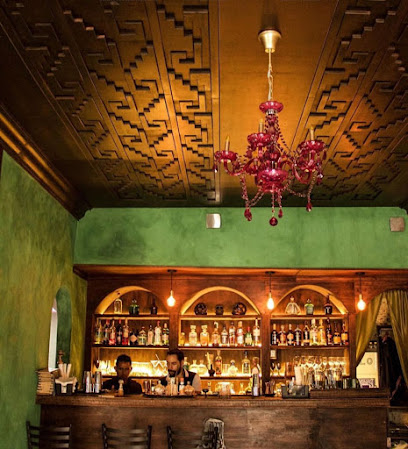
El Espacio: Cocktail, Mezcal & Agave Bar
Experience the vibrant spirit of Oaxaca at El Espacio, where exquisite cocktails and the finest mezcal await you in a lively atmosphere.
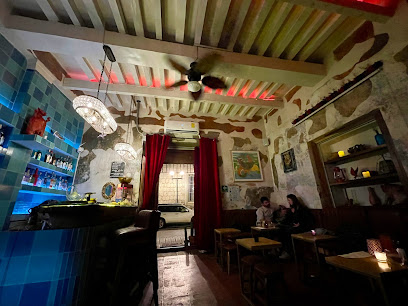
fito's bar
Experience the vibrant nightlife of Oaxaca at Fito's Bar, where local culture meets an inviting atmosphere and delicious drinks.
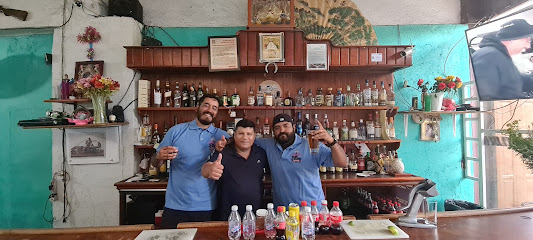
Tres Hermanas Bar and Smoke shop
Experience the vibrant atmosphere of Tres Hermanas Bar and Smoke Shop, a must-visit destination for drinks and local culture in Oaxaca.
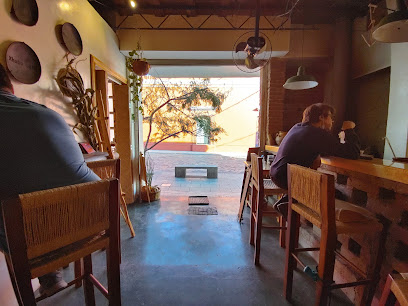
RetroCool
Experience the vibrant atmosphere of RetroCool, where friendly bartenders serve expertly crafted mezcal cocktails in the heart of Oaxaca.

Bar El Caracol
Experience the vibrant atmosphere and local flavors at Bar El Caracol, a must-visit bar in the heart of Oaxaca, Mexico.
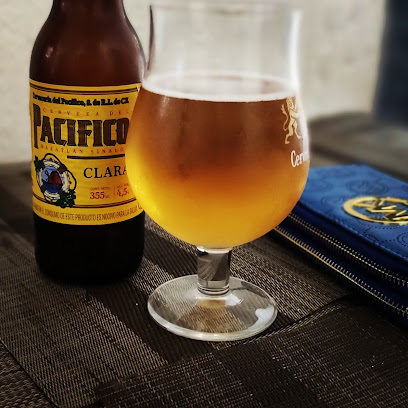
Local Phrases
-
- HelloHola
[oh-lah] - GoodbyeAdiós
[ah-dee-ohs] - YesSí
[see] - NoNo
[noh] - Please/You're welcomePor favor/De nada
[por fah-vor/deh nah-dah] - Thank youGracias
[grah-see-ahs] - Excuse me/SorryPerdón/Lamento
[pair-dohn/lah-men-toh] - How are you?¿Cómo estás?
[koh-moh ehs-tahs] - Fine. And you?Bien. ¿Y tú?
[bee-ehn. ee too] - Do you speak English?¿Hablas inglés?
[ah-blahs een-glehs] - I don't understandNo entiendo
[noh ehn-tee-ehn-doh]
- HelloHola
-
- I'd like to see the menu, pleaseQuisiera ver el menú, por favor
[kee-see-eh-rah vehr ehl meh-noo, por fah-vor] - I don't eat meatNo como carne
[noh koh-moh kahr-neh] - Cheers!¡Salud!
[sah-loohd] - I would like to pay, pleaseQuisiera pagar, por favor
[kee-see-eh-rah pah-gahr, por fah-vor]
- I'd like to see the menu, pleaseQuisiera ver el menú, por favor
-
- Help!¡Ayuda!
[ah-yoo-dah] - Go away!¡Vete!
[veh-teh] - Call the Police!¡Llama a la policía!
[yah-mah ah lah poh-lee-see-ah] - Call a doctor!¡Llama a un doctor!
[yah-mah ah oon dohk-tohr] - I'm lostEstoy perdido
[ehs-toy pair-dee-doh] - I'm illEstoy enfermo
[ehs-toy ehn-fehr-moh]
- Help!¡Ayuda!
-
- I'd like to buy...Quisiera comprar...
[kee-see-eh-rah kohm-prar] - I'm just lookingSólo estoy mirando
[soh-loh ehs-toy mee-rahn-doh] - How much is it?¿Cuánto cuesta?
[kwan-toh kwehs-tah] - That's too expensiveEso es muy caro
[eh-soh ehs mwee kah-roh] - Can you lower the price?¿Puedes bajar el precio?
[pweh-dehs bah-har ehl preh-see-oh]
- I'd like to buy...Quisiera comprar...
-
- What time is it?¿Qué hora es?
[keh oh-rah ehs] - It's one o'clockEs la una
[ehs lah oo-nah] - Half past (10)Media hora (10)
[meh-dee-ah oh-rah (deez)] - MorningMañana
[mah-nyah-nah] - AfternoonTarde
[tahr-deh] - EveningNoche
[noh-cheh] - YesterdayAyer
[ah-yehr] - TodayHoy
[oy] - TomorrowMañana
[mah-nyah-nah] - 1Uno
[oo-noh] - 2Dos
[dohs] - 3Tres
[trehs] - 4Cuatro
[kwah-troh] - 5Cinco
[seen-koh] - 6Seis
[sehs] - 7Siete
[syeh-teh] - 8Ocho
[oh-choh] - 9Nueve
[nweh-veh] - 10Diez
[dyehs]
- What time is it?¿Qué hora es?
-
- Where's a/the...?¿Dónde está un/el...?
[dohn-deh ehs-tah oon/ehl] - What's the address?¿Cuál es la dirección?
[kwal ehs lah dee-rehk-syohn] - Can you show me (on the map)?¿Puedes mostrarme (en el mapa)?
[pweh-dehs mohs-trar-meh (ehn ehl mah-pah)] - When's the next (bus)?¿Cuándo es el próximo (autobús)?
[kwan-doh ehs ehl prohk-see-moh (ow-toh-boos)] - A ticket (to ....)Un boleto (a ....)
[oon boh-leh-toh (ah)]
- Where's a/the...?¿Dónde está un/el...?
History of Ruta Independencia
-
Ruta Independencia, like much of Oaxaca, was heavily influenced by the Spanish colonization that began in the early 16th century. The area became a bustling hub for trade and culture, with colonial architecture that reflects the Spanish influence melding with indigenous elements. Key buildings from this period can still be seen along the streets, showcasing the rich history of the blending cultures.
-
The name 'Ruta Independencia' is a homage to the pivotal role Oaxaca played in the Mexican War of Independence. The region was a hotbed of revolutionary activity, with notable figures such as José María Morelos, who was born in Valladolid but had strong ties to Oaxaca. The streets of Ruta Independencia echo with the stories of those who fought for freedom from Spanish rule during the early 19th century.
-
Throughout the 20th century, Ruta Independencia became a center for cultural renaissance, particularly during the post-revolution period. Artists such as Rufino Tamayo and Francisco Toledo were influenced by the rich indigenous cultures of the region. The area showcases vibrant murals and galleries that reflect this artistic evolution, with many pieces celebrating Oaxacan heritage and social themes.
-
The neighborhood is also known for its deep-rooted indigenous culture, with communities such as the Zapotecs and Mixtecs having a significant influence on the area. Their traditions, crafts, and languages are integral to the identity of Ruta Independencia, contributing to the rich tapestry of Oaxacan culture that is celebrated during various festivals throughout the year.
-
In contemporary times, Ruta Independencia serves as a focal point for social and political movements in Oaxaca. The area often hosts protests and gatherings that advocate for indigenous rights and social justice, reflecting the ongoing struggles and resilience of the local communities. This vibrant activism is a testament to the neighborhood's historical roots in the fight for independence and equality.
Ruta Independencia Essentials
-
Ruta Independencia is conveniently located in Oaxaca, easily accessible from other neighborhoods. From the city center, you can take a taxi or walk, as it is about a 15-minute walk. For those coming from the bus terminal, local taxis and buses are available, with a typical fare of around 50-70 pesos. If you're traveling from the airport, consider arranging a taxi in advance or using ride-sharing apps for convenience.
-
Ruta Independencia is best explored on foot due to its compact size. You can also rent bicycles from local shops to enjoy the sights at a leisurely pace. Public transportation, including buses and taxis, is available for longer distances, but many attractions are within walking distance. Be cautious when using buses, as they may be crowded during peak hours.
-
Ruta Independencia is generally safe, but tourists should remain vigilant. Avoid areas such as the outskirts of the neighborhood after dark, as they may have higher crime rates. Pickpocketing can occur in crowded areas; keep your belongings secured and avoid displaying valuables. It's advisable to travel in groups when possible, especially at night.
-
In emergencies, dial 911 for police, fire, or medical assistance. The local hospital is located nearby, and pharmacies are available for non-emergency health needs. It’s recommended to carry a copy of your passport and emergency contacts. Travel insurance is advisable for coverage in case of medical issues.
-
Fashion: Do wear comfortable clothing suitable for warm weather. Don't wear overly flashy or revealing attire. Religion: Do respect local customs, especially in churches—cover your shoulders and knees. Public Transport: Do be courteous and give your seat to those in need. Don't eat or drink on buses. Greetings: Do greet locals with a friendly 'buenas días' and a smile. Eating & Drinking: Do try local foods from markets. Don’t refuse food or drink offered to you—it's considered impolite.
-
To experience Ruta Independencia like a local, visit the vibrant markets early in the morning for fresh produce and artisanal goods. Join in community events or festivals if your visit coincides with one. Interact with local artisans; many are eager to share their stories and craft details. Explore lesser-known eateries where locals dine for an authentic culinary experience.
Trending Landmarks in Ruta Independencia
-
Zócalo (Plaza de la Constitución)
-
Zona Arqueológica de Monte Albán
-
Templo de Santo Domingo de Guzmán
-
Plaza de la Danza
-
Jardín Etnobotánico de Oaxaca
-
Fuente de las 8 Regiones
-
Metropolitan Cathedral of Oaxaca
-
Museum of Cultures of Oaxaca, Santo Domingo
-
Museo De La Filatelia MUFI
-
MUSEO DE ARTE CONTEMPORANEO DE OAXACA
-
Museum of Oaxacan Painters
-
MUSEO BELBER
-
Espacio Zapata
-
Ofrenda
-
Oaxaca
Nearby Cities to Ruta Independencia
-
Things To Do in Puerto Escondido
-
Things To Do in Veracruz
-
Things To Do in Puebla
-
Things To Do in Acapulco
-
Things To Do in Taxco
-
Things To Do in Mexico City
-
Things To Do in Chiapas
-
Things To Do in Queretaro
-
Things To Do in San Miguel de Allende
-
Things To Do in Quetzaltenango
-
Things To Do in Chichicastenango
-
Things To Do in Lake Atitlán
-
Things To Do in Guanajuato
-
Things To Do in Panajachel
-
Things To Do in Antigua Guatemala

